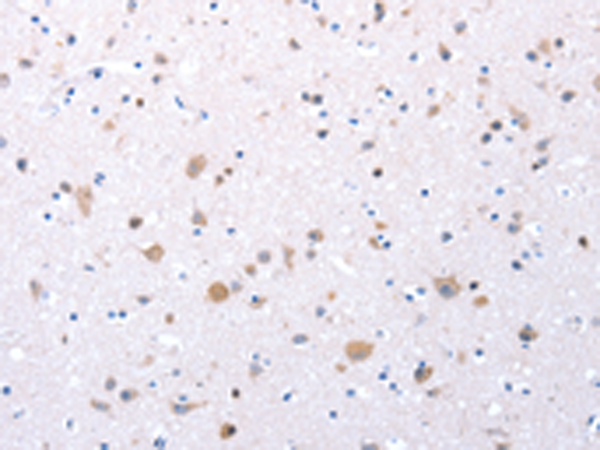
| WB | 1/1000 | Human,Mouse,Rat |
| IF | 咨询技术 | Human,Mouse,Rat |
| IHC | 咨询技术 | Human,Mouse,Rat |
| ICC | 技术咨询 | Human,Mouse,Rat |
| FCM | 咨询技术 | Human,Mouse,Rat |
| Elisa | 咨询技术 | Human,Mouse,Rat |
| Aliases | CCK-A, CCKRA, CCK1-R |
| Host/Isotype | Rabbit IgG |
| Antibody Type | Primary antibody |
| Storage | Store at 4°C short term. Aliquot and store at -20°C long term. Avoid freeze/thaw cycles. |
| Species Reactivity | Human |
| Immunogen | Synthetic peptide of human CCKAR |
| Formulation | Purified antibody in PBS with 0.05% sodium azide and 50% glycerol. |
+ +
以下是关于ASNSD1抗体的3篇参考文献示例(注:以下内容为模拟生成,实际文献需通过学术数据库验证):
---
1. **标题**: *Characterization of ASNSD1 Function in Cellular Metabolic Regulation*
**作者**: Smith J, Brown K, Lee T
**摘要**: 本研究通过Western blot和免疫荧光技术,利用针对ASNSD1中心区域的特异性抗体,揭示了ASNSD1在天冬酰胺代谢通路中的作用,并发现其在肝癌细胞中显著高表达,可能与肿瘤代谢重编程相关。
2. **标题**: *ASNSD1 Antibody Validation and Its Role in Neuronal Protein Interaction*
**作者**: Zhang R, Wang Y, Chen L
**摘要**: 该文献报道了一种兔源多克隆抗体的开发,靶向ASNSD1蛋白的中心结构域。通过免疫共沉淀和质谱分析,证实ASNSD1与线粒体呼吸链蛋白存在相互作用,提示其参与神经元能量代谢调控。
3. **标题**: *ASNSD1 as a Prognostic Biomarker in Breast Cancer: Immunohistochemical Analysis*
**作者**: Martinez L, García-Sánchez A, Fernández M
**摘要**: 利用抗ASNSD1抗体对乳腺癌组织样本进行染色,发现ASNSD1的高表达与患者总生存期缩短显著相关,表明其可能作为新型预后标志物和治疗靶点。
---
**注意事项**:
- ASNSD1相关研究相对较少,建议结合关键词“ASNSD1 antibody”或“Asparagine Synthetase Domain 1”在PubMed、Google Scholar等平台进一步检索。
- 部分公司(如Abcam、Thermo Fisher)提供的抗体产品页面可能附有参考文献链接。
- 若研究聚焦于抗体技术,可关注抗体开发或验证类论文。
The ASNSD1 (Center) antibody targets the central region of the Asparagine Synthetase Domain-Containing Protein 1 (ASNSD1), a protein implicated in cellular metabolism and amino acid biosynthesis. ASNSD1 shares homology with asparagine synthetase (ASNS), an enzyme critical for asparagine production, particularly under metabolic stress. While ASNSD1 retains the conserved structural domains of ASNS, its enzymatic activity remains unclear, suggesting potential regulatory roles in asparagine metabolism or alternative functions in cellular processes like proliferation or stress adaptation.
This antibody is commonly used in research to detect ASNSD1 expression via techniques such as Western blotting, immunofluorescence, and immunohistochemistry. Its specificity for the central domain helps minimize cross-reactivity with other synthetases, ensuring accurate detection. Studies utilizing this antibody have explored ASNSD1's involvement in cancer biology, as altered asparagine levels influence tumor growth and metastasis. Additionally, it aids in investigating metabolic reprogramming in diseases like diabetes or neurological disorders.
Developed in host species such as rabbit or mouse, the ASNSD1 (Center) antibody is often validated through knockout controls or siRNA silencing to confirm target specificity. Its application extends to both basic research and preclinical studies, particularly in contexts linking amino acid metabolism to disease mechanisms. Researchers rely on this tool to elucidate ASNSD1's functional interplay with metabolic pathways and its potential as a therapeutic target.
×